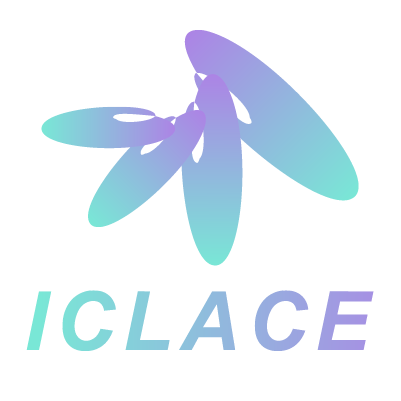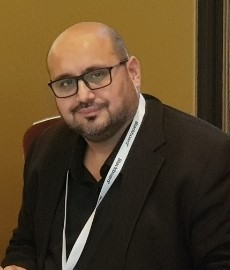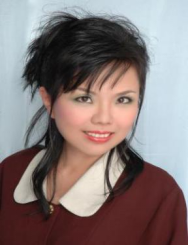
Speakers
| Prof. Andrea L. BaldiniNanjing University, China Brief: Andrea Lorenzo Baldini is Outstanding Young Talent Full Professor of Aesthetics and Art Theory at the School of Arts of Nanjing University and Director of the NJU Center for Sino-Italian Cultural Studies. He is also a founding Editor-in-Chief of the East Asian Journal of Philosophy (eajp.online). He has distinctly interdisciplinary research interests, which lie at the intersection of aesthetics, art management, intellectual property law, and visual culture. He is especially interested in how creativity can add value(s) to our everyday practices and objects. He has written three monographs and circa 50 essays published in edited collections and international journals such as Philosophy Compass, The Journal of Aesthetics and Art Criticism, and The Journal of Visual Culture. He has won the Top Paper in Urban Communication of the National Communication Association (NCA) and the Nordev Prize from Temple University Title: Expanded Exhibitions and Digital Communication Abstract: How can digital communication transform artistic exhibitions? 六/6: Finding Meaning is an attempt to answer that question in practice. Developed and realized in collaboration with Pietro Rivasi, students from two of my classes at Nanjing University, and an international group of artist, it is arguably the first specimen of what I shall call the expanded exhibition, that is, an exhibition inhabiting an expanded public space, between the physical and the digital. 六/6 shows us that, once liberated spatially, exhibitions can be effective tools of meaning- making and social change. In effect, by exploiting the interplay between the digital and the physical domains, expanded exhibitions such as 六/6 can build alternatives of cultural production that not only can cope with a need for social distancing, but that are also participatory, democratic with respect to access, and can be politically transformative by displacing the hierarchy center/periphery thanks for digital communication. These exhibitions can offer an extended forum of reflection, which in the case of 六/6 was meant to facilitate processing our pandemic trauma, while possibly challenging exclusionary trends in cultural production and consumption. |
A. Prof. Emad A. S. Abu-AyyashThe British University in Dubai, The United Arab Emirates Brief: Emad A. S. Abu-Ayyash is an associate professor of education/TESOL at the British University in Dubai, United Arab Emirates. He achieved his Ph.D in Education/TESOL from the British University in Dubai, in 2016, his M.A. degree (Hons) in translation from Yarmouk University, Jordan in 2007 and his B.A. degree (Hons) in English literature and linguistics from Yarmouk University, Jordan in 1996. His research interests and publications include areas such as TESOL, discourse analysis, teaching and learning, translation, assessment, and online education. Throughout his career, he provided training for hundreds of teachers on teaching methods and curriculum design. He participated in several local and international conferences in education. Title: Cohesive Devices: What is needed? Abstract: In 1976, Halliday and Hasan developed a model of cohesive devices that has been considered the most comprehensive model of cohesion to-date. The model classified cohesive devices, which are the linguistic tools used to link the different parts of the text, into two categories: grammatical cohesion and lexical cohesion. The former consists of reference, substitution, ellipsis and conjunctions, while the latter houses relationships that include reiteration, synonymy, antonymy, hyponymy, meronymy and collocation. My speech expounds on these relationships, highlights the way they can be employed in writing, and navigates through critical questions about some of them. The speech will also invite the participants to think about transferring their knowledge about cohesion in a practical way. Finally, my speech will throw light on the challenges that still exist in using and researching cohesive devices and the opportunities that teachers and researchers still have within this domain. Finally, the speech showcases an example of a study that was different from the mainstream research done so far on cohesion. The hope is that teachers and researchers will begin to mull over ideas to make more effective use of cohesive devices in their future efforts. |
|
| A.Prof. Chew Fong PengUniversity of Malaya (UM), Malaysia Brief:Associate Professor Dr. Chew Fong Peng is the Centre for Research in Language Education (CRiLE) Chair, Faculty of Education, University of Malaya (UM), Malaysia. She teaches Malay Language Education, Chinese Language Education, and early childhood education programs. She has presented approximately 180 working papers in international and international seminars and conferences in Malaysia and foreign countries, published 9 books, 148 articles published in journals, 74 papers in conference proceedings, 45 chapters in books, 21 translated books including creative writings, 14 edited books, and edited creative writings. She is the book editor of Taylor & Francis, editor for Malaysian Year 4, 5, and 6 History textbooks, and Year 1 Arts and Music Education textbooks. Assoc. Prof. Dr. Chew has completed 31 research projects, 10 of which being the lead researcher. She won numerous medals in the academy and innovative expo, besides being listed in Marquis Who's Who in the World 2011, 2012, 2014, 2015, 2017, 2018, 2019, and 2020. Chew is an article reviewer for established international journals on the Web of Science and Scopus, such as Frontiers in Psychology, Frontiers in Education, Asia-Pacific Education Researcher, Asia Pacific Journal of Education, SAGE Open, Educational Research and Reviews (ERR), Pertanika: Journal of Social Sciences and Humanities, GEMA Online, etc. Associate Professor Dr. Chew is also a member of the editorial board of many national and international journals including the Journal of Contemporary Educational Research, Review of Educational Theory, GATR Global Journal for Business & Social Science Review, and Advisory of International Research and Development Center for Publication (IRDCP). She was invited as a visiting professor at Peking University, China from October 2011 to June 2012. Title: What Literary Materials Do Malaysian Children Favor? Abstract: Children’s literature is a building agent in the formation of human emotions, thoughts, and languages. To date, there is an over-reliance on referential materials sourced or translated from the West. Nowadays, children’s literature is increasingly isolated and rarely found in the market. Thus an interesting storyline becomes of utmost importance to attracting children. Therefore, research has been conducted to identify the favorite children's storybooks in Malaysia. A survey using a questionnaire was distributed to 646 preschool teachers and university students who specialized in early childhood and Malay literature. Among children’s literature, animal tales are the most popular storybooks, followed by funny stories, origin stories, legend stories, exemplary stories, and finally lipurlara stories. This speech will discuss the favorite children's stories to find out the interesting elements to attract the interest of children. |


